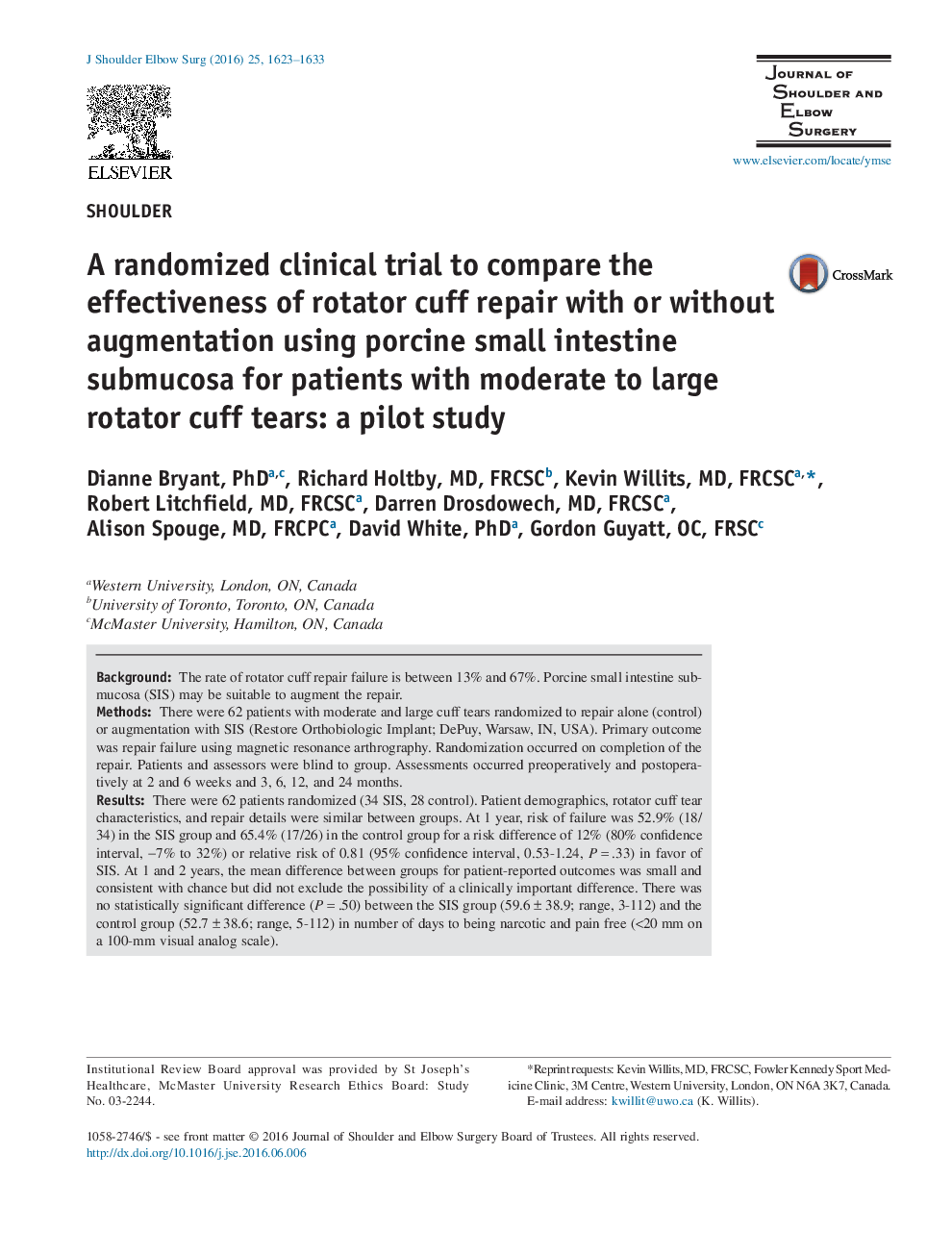| Article ID | Journal | Published Year | Pages | File Type |
|---|---|---|---|---|
| 4072729 | Journal of Shoulder and Elbow Surgery | 2016 | 11 Pages |
BackgroundThe rate of rotator cuff repair failure is between 13% and 67%. Porcine small intestine submucosa (SIS) may be suitable to augment the repair.MethodsThere were 62 patients with moderate and large cuff tears randomized to repair alone (control) or augmentation with SIS (Restore Orthobiologic Implant; DePuy, Warsaw, IN, USA). Primary outcome was repair failure using magnetic resonance arthrography. Randomization occurred on completion of the repair. Patients and assessors were blind to group. Assessments occurred preoperatively and postoperatively at 2 and 6 weeks and 3, 6, 12, and 24 months.ResultsThere were 62 patients randomized (34 SIS, 28 control). Patient demographics, rotator cuff tear characteristics, and repair details were similar between groups. At 1 year, risk of failure was 52.9% (18/34) in the SIS group and 65.4% (17/26) in the control group for a risk difference of 12% (80% confidence interval, −7% to 32%) or relative risk of 0.81 (95% confidence interval, 0.53-1.24, P = .33) in favor of SIS. At 1 and 2 years, the mean difference between groups for patient-reported outcomes was small and consistent with chance but did not exclude the possibility of a clinically important difference. There was no statistically significant difference (P = .50) between the SIS group (59.6 ± 38.9; range, 3-112) and the control group (52.7 ± 38.6; range, 5-112) in number of days to being narcotic and pain free (<20 mm on a 100-mm visual analog scale).ConclusionWe found no evidence that SIS-augmented rotator cuff repair provides superior outcomes in patients with moderate rotator cuff tears.
